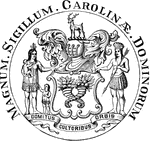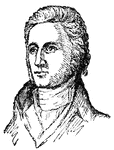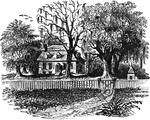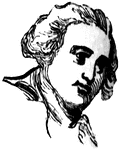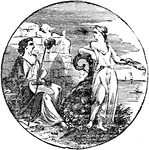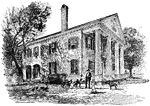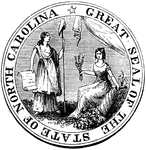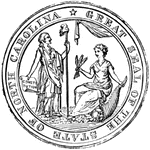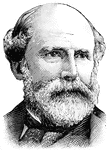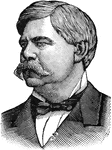North Carolina
The North Carolina ClipArt gallery includes 14 illustrations related to the State of North Carolina.

13 Star United States Flag, 1776
Color illustration of a 13 Star United States flag. The original 13 stars represent the states of Delaware,…

13 Star United States Flag, 1776
Black line illustration of a 13 Star United States flag. The original 13 stars represent the states…
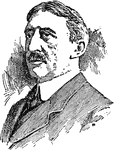
Edwin Anderson Alderman
(1861-1931) American educator serving as president of the University of North Carolina, Tulane University,…

Battle of Bentonville
"The Battle of Bentonville, N. C.- Major General Mower, commanding First Division, Seventeenth Corps,…

Bogue Island
"The Federal siege works on Bogue Island, N. C., erected for the reduction of Fort Macon. Our sketch…
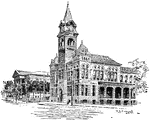
Courthouse and City Hall, Wilmington, North Carolina
The courthouse and City Hall of Wilmington, North Carolina.
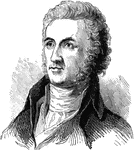
William Richardson Davie
William Richardson Davie (June 22, 1756–November 5, 1820) was the Governor of North Carolina from…

DePeyster Raises a White Flag
Arent DePeyster, a British military officer of the American Revolution, surrenders at the Battle of…

Explosion
"Explosion of 3,000 musket cartridges in a tent at Fort Totten, New Berne, N. C., the headquarters of…

Fort Fisher
"First assault upon Fort Fisher, Sunday, January 15th, 1865. The One Hundred and Seventeenth New York…

Fort Hatteras
"General view of Forts Hatters and Clark, N. C., captured on the 29th of August, 1861, by the Federal…

The Battlefield of Guilford
The Battle of Guilford Court House was a battle fought on March 15, 1781 inside the present-day city…

Fort Hatteras
View of the camp of the twentieth Indiana Regiment; also of Fort Hatteras and the anchorage at Hatteras…
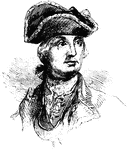
Robert Howe
(1732-1786) Appointed general for the North Carolina regiment during the Revolutionary War.

Johnston's Surrender
In light of overwhelming enemy strength and the relatively heavy casualties his army suffered in the…
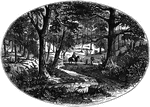
View at King's Mountain Battleground
The Battle of Kings Mountain, October 7, 1780, was an important Patriot victory in the Southern campaign…

Battle of New Bern
Landing at the Battle of New Bern, also known as the Battle of New Berne or Battle of Newbern which…

Battle of New Berne
"Battle of New Berne- Lieutenant Hammond capturing Colonel Avery, of South Carolina, while he was endeavoring…

Troops Landing at Newbern
The Battle of New Bern was fought on 14 March 1862, near the city of New Bern, North Carolina, as part…

Seal of North Carolina
The Great Seal of the State of North Carolina, 1773. The seal shows Liberty standing and Plenty holding…
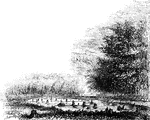
Pyle's Pond
"Pyle's Pond. About a quarter of a mile northwest from this pond, is the spot where the battle occurred.…
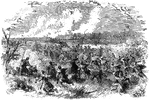
Battle of Roanoke Island
"Battle of Roanoke Island, February 8th, 1862- decisive bayonet charge of the Ninth New York Volunteers…
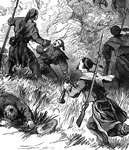
Battle of Roanoke Island
"Battle of Roanoke Island, February 8th, 1862- decisive bayonet charge of the Ninth New York Volunteers…

Battle of Roanoke Island
"Battle of Roanoke Island, February 8th, 1862- decisive bayonet charge of the Ninth New York Volunteers…
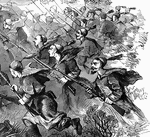
Battle of Roanoke Island
"Battle of Roanoke Island, February 8th, 1862- decisive bayonet charge of the Ninth New York Volunteers…
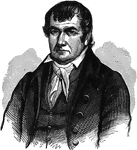
James Robertson
James Robertson (June 28, 1742–September 1, 1814) was a North Carolina farmer and explorer of the…

Schooners
"Removing sunken schooners from Core Sound, N. C., placed to obstruct the passage of the Federal gunboats,…
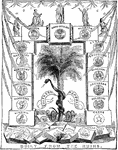
Southern Republic Built from the Ruins
A political cartoon of the Southern states being built from the ruins after the Civil War.

Fort Thompson
"View of New Berne, N. C., from the interior of Fort Thompson after its capture by the Federal forces-…
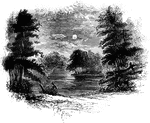
Trading Ford
"Trading Ford. This view of the Trading Ford, where greene, with Morgan and his light troops, crossed…
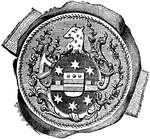
William Tryon Seal
"Seal and signature of Tryon. William Tryon was a native of Ireland, and was educated to the profession…

Tryon Palace
"Front view of Tryon's Palace. The view here given was the north front, toward the town. The center…
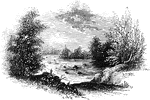
Tuckesege Ford
"View at Tuckesege Ford. This view is from the western bank of the Catawba, looking down the stream."—Lossing,…

Camp Wool
"Camp Wool, two miles from Fort Clark, Hatteras Island, occupied by Hawkins's Zouaves, Ninth Regiment,…

Burning of York
"A detachment of United States sailors from the gunboats Albatross and Gemsbok burning…

